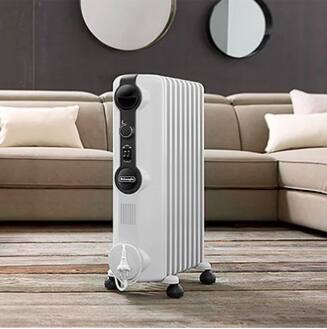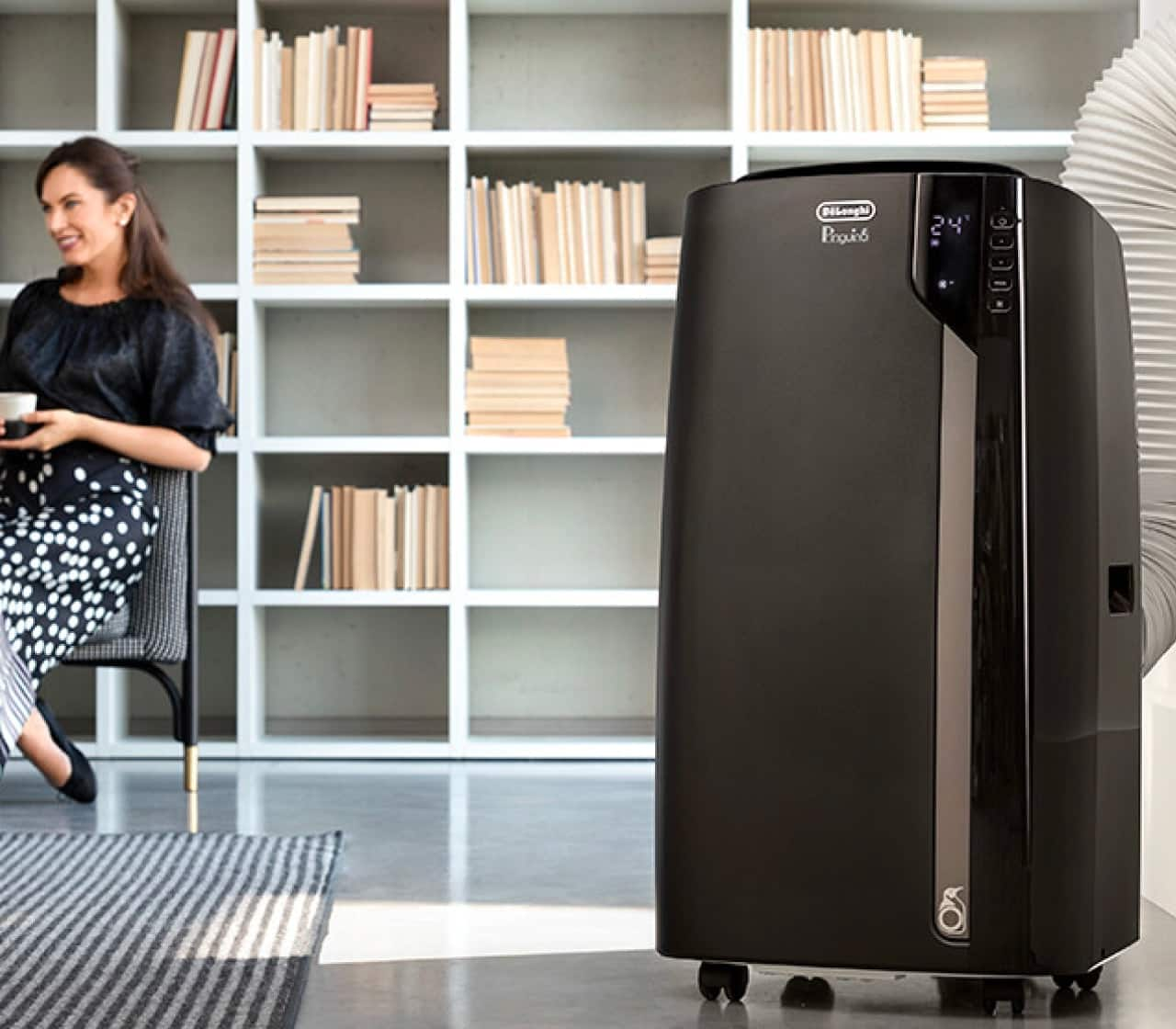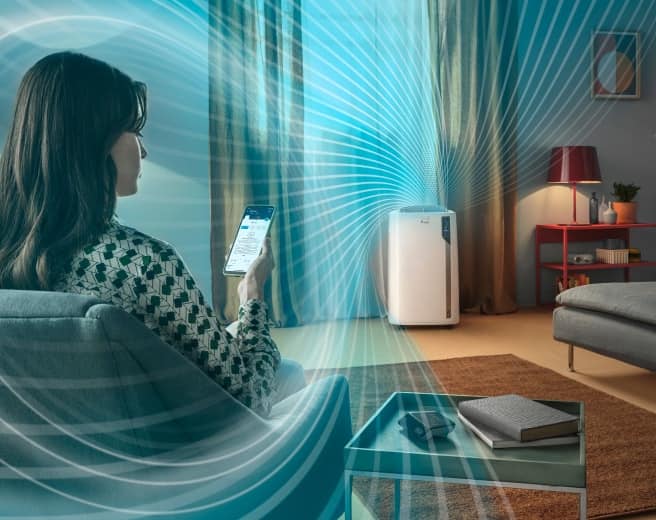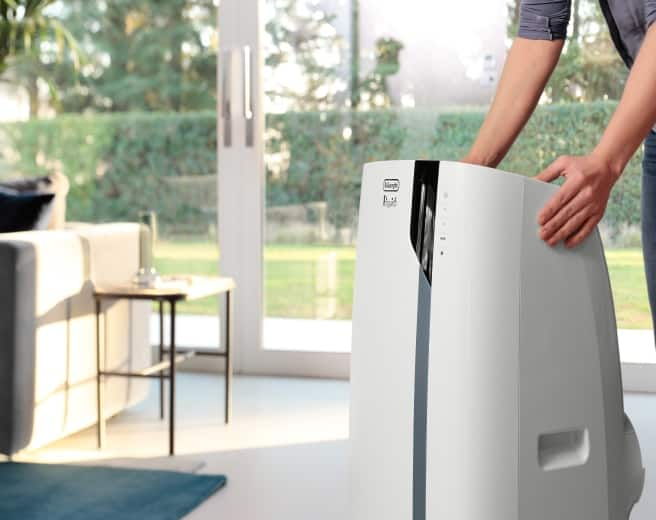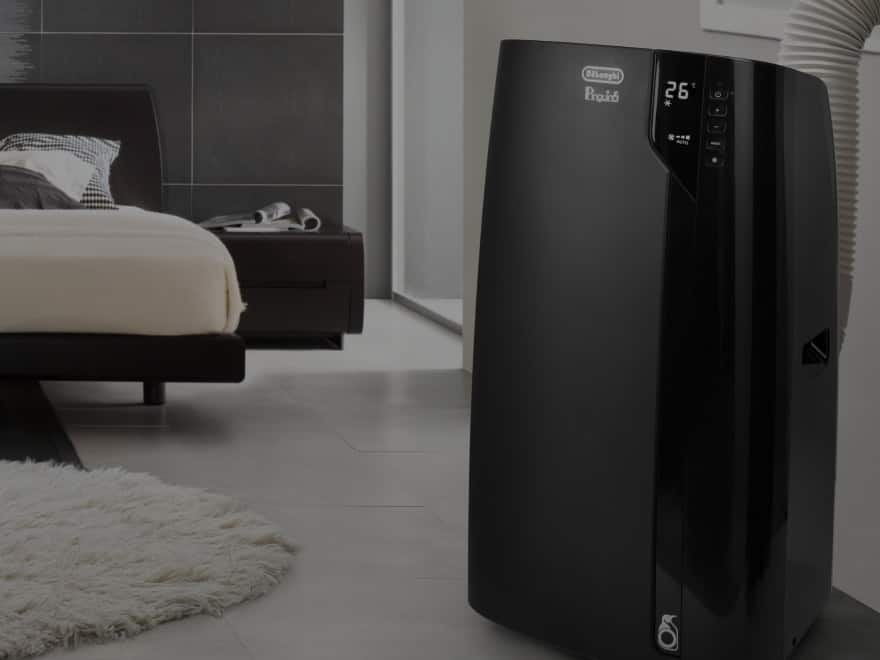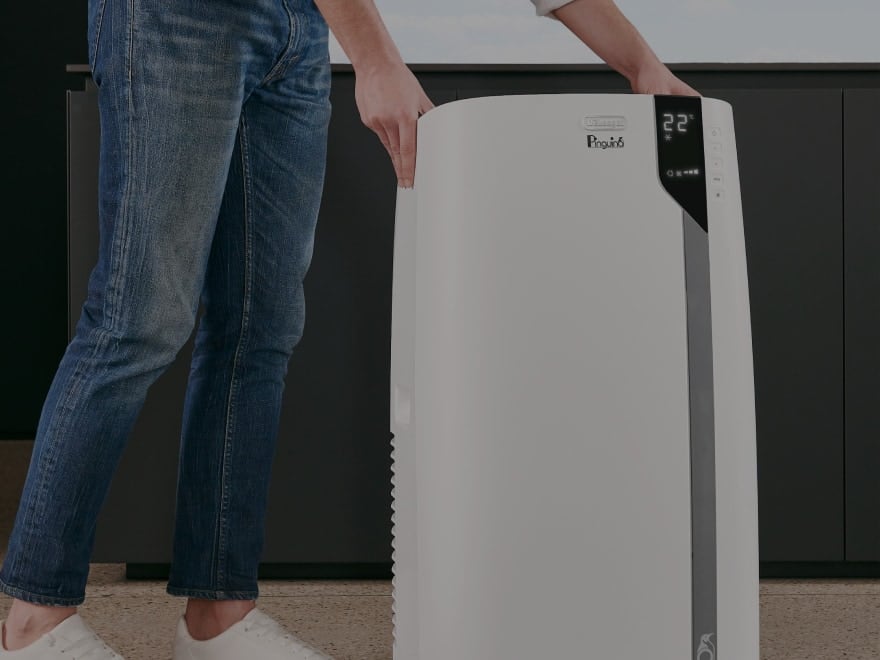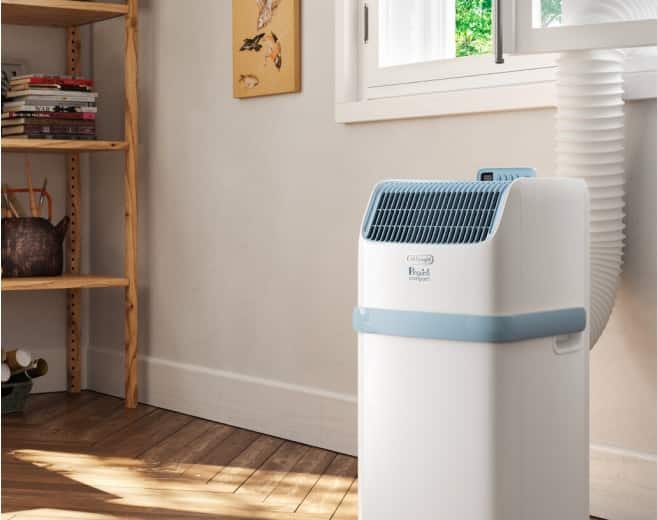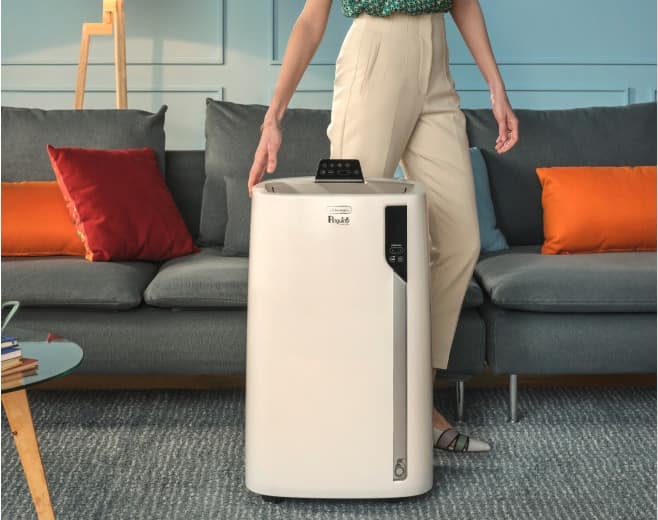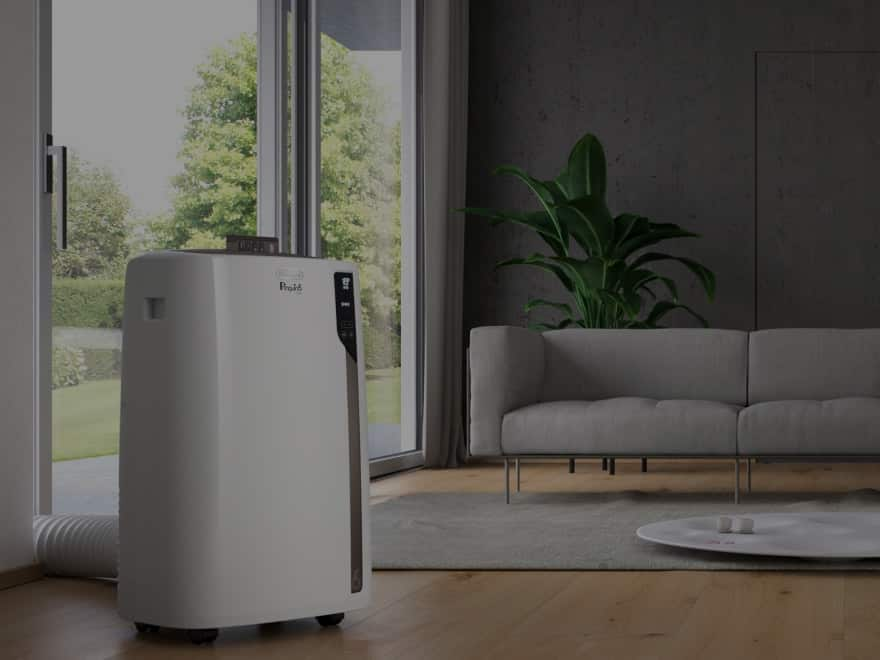
Fonction chauffage et fonction déshumidification
La fonction de déshumidification aide à éliminer l’excès d’humidité de l’air, en améliorant le confort et réduisant le risque de moisissure. Elle peut-être utilisée, par exemple, dans une pièce très humide ou à certaines périodes de l’année où le gradient d’humidité est particulièrement élevé. La fonction chauffage, disponible sur le De'Longhi PAC EL92HP, permet à l’appareil de fournir de la chaleur pendant les mois plus froids, ce qui en fait un appareil polyvalent utilisable tout au long de l’année.





